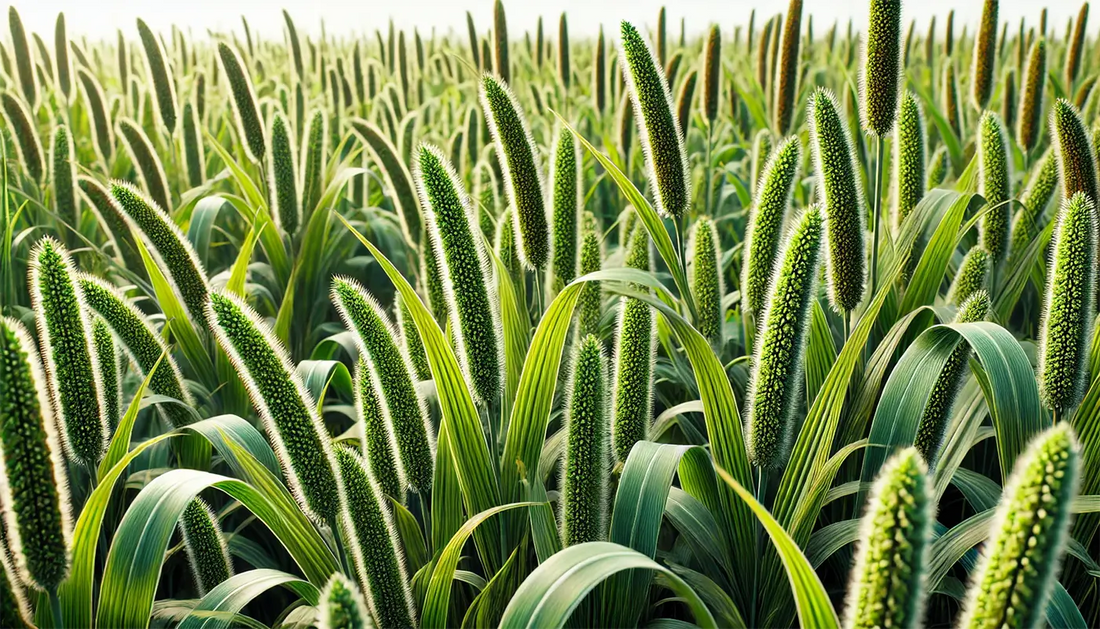
Millet farming: The cost-effective alternative to traditional crops for sustainable agriculture
Millet farming is gaining popularity as a sustainable alternative to traditional crops. With rising concerns about the environmental impact of agriculture, millet offers a viable solution. This crop has numerous benefits, including low-cost production, better resilience, and suitability for various climates. Let's explore why millet farming is the cost-effective alternative to traditional crops for sustainable agriculture.
Why millet is cost-effective
Millets require fewer resources compared to traditional crops. Unlike wheat and rice, millets grow well with minimal water. They also need less fertilizer and pesticide. This significantly reduces the cost for farmers. In times of water scarcity, farmers can depend on millet for their livelihood. The lower input costs make millet farming a budget-friendly option.
Farmers also benefit from low operational costs. Millets adapt to various soil types, even marginal or infertile soils. This means farmers can use land that is not ideal for other crops. With millets, land preparation costs drop, making farming more economical.
Water efficiency and climate resilience
Water scarcity is a big issue in agriculture today. Millet requires far less water compared to crops like rice. It can thrive even with minimal rainfall. This makes it suitable for drought-prone regions. In a world facing climate change, water-efficient crops are essential. Millet farming helps reduce water use in agriculture and contributes to better resource management.
Millets are also climate-resilient. They can withstand extreme temperatures and are less susceptible to pests. Traditional crops often fail when conditions are not ideal. Millets, however, can handle stress and grow well in varying climates. This quality makes millet an excellent choice for farmers dealing with unpredictable weather.
Nutritional benefits of millets
Millets are not just cost-effective; they are also highly nutritious. They contain essential nutrients like fibre, protein, and vitamins. Millets are gluten-free, making them a great option for people with gluten intolerance. The nutritional profile of millets is much better compared to other grains.
Including millets in one's diet can have several health benefits. Millets help in regulating blood sugar levels, making them suitable for people with diabetes. They also improve digestive health due to their high fibre content. By encouraging millet consumption, farmers can help contribute to community health.
Millet farming for sustainable agriculture
Sustainability is becoming more important in agriculture. Millets contribute to sustainable farming practices in several ways. First, they require fewer inputs, which means less reliance on chemical fertilizers and pesticides. This leads to reduced soil degradation and less chemical runoff into water bodies.
Millet farming also supports biodiversity. Farmers can grow multiple varieties of millet on the same land. This not only helps maintain soil fertility but also reduces the risk of pests and diseases. Crop diversity leads to more resilient farming systems, benefiting both farmers and the environment.
Inclusive farming practices
Millet farming is also socially inclusive. It provides opportunities for small-scale farmers and marginalized communities. Unlike high-input crops, millets do not require costly machinery or significant investment. Farmers with limited resources can easily cultivate millet. This helps uplift small farmers, providing them with a steady income.
Additionally, women play a significant role in millet cultivation. In many regions, women manage the cultivation and harvesting of millets. By promoting millet farming, we empower women in agriculture, contributing to gender equality. Inclusive farming practices strengthen communities and build resilient agricultural systems.
Market opportunities for millet farmers
There is a growing demand for healthy and organic food. This trend opens up new market opportunities for millet farmers. Health-conscious consumers are choosing millets for their rich nutritional value. Farmers can tap into this market by producing organic and high-quality millet products.
Moreover, the government is promoting millets as a part of its agricultural policy. Many countries offer subsidies and incentives to farmers who grow millets. This makes millet farming more profitable. By aligning with government policies, farmers can gain financial benefits and contribute to national food security.
Millet farming for sustainable agriculture: Challenges and how to overcome them
Despite its advantages, millet farming does face challenges. One major challenge is the lack of awareness. Many farmers are still unfamiliar with millet cultivation practices. Providing training and support can help overcome this barrier. Agricultural extension services can play a key role in educating farmers.
Another challenge is market access. Farmers often find it difficult to sell their produce at a fair price. Building strong value chains and connecting farmers to markets is crucial. Cooperatives can help farmers pool their produce, negotiate better prices, and reduce transportation costs. With the right support, millet farming can become a lucrative option for many.
How millet farming contributes to food security
Food security is a major concern for many countries. Millets have a short growing period, meaning they can be harvested quickly. This ensures a steady food supply, especially in regions prone to food shortages. Millets can help bridge the gap between food demand and supply.
Furthermore, millets store well. They can be kept for long periods without spoiling. This makes them an ideal crop for maintaining food reserves. By promoting millet farming, we can ensure a reliable food supply even in challenging times.
Conclusion: The future of millet farming for sustainable agriculture
Millet farming is a cost-effective and sustainable alternative to traditional crops. Its low input requirements, resilience, and nutritional value make it ideal for modern agriculture. Millets help address challenges like water scarcity, soil degradation, and food security.
To fully realize the potential of millet farming, support is needed at various levels. Government policies, market linkages, and farmer training are all essential. With the right initiatives, millet farming can play a vital role in sustainable agriculture and community well-being.
By choosing millets, we are not only supporting farmers but also contributing to a healthier planet. It's time to embrace millets and make them a staple in our food systems.
Image Courtesy: ACCENTERRA
Did you find this blog post helpful? Got ideas or questions? Join the conversation below! Your insights could help others too, so don’t hesitate to share!
Please note that all comments will be moderated before being published.




